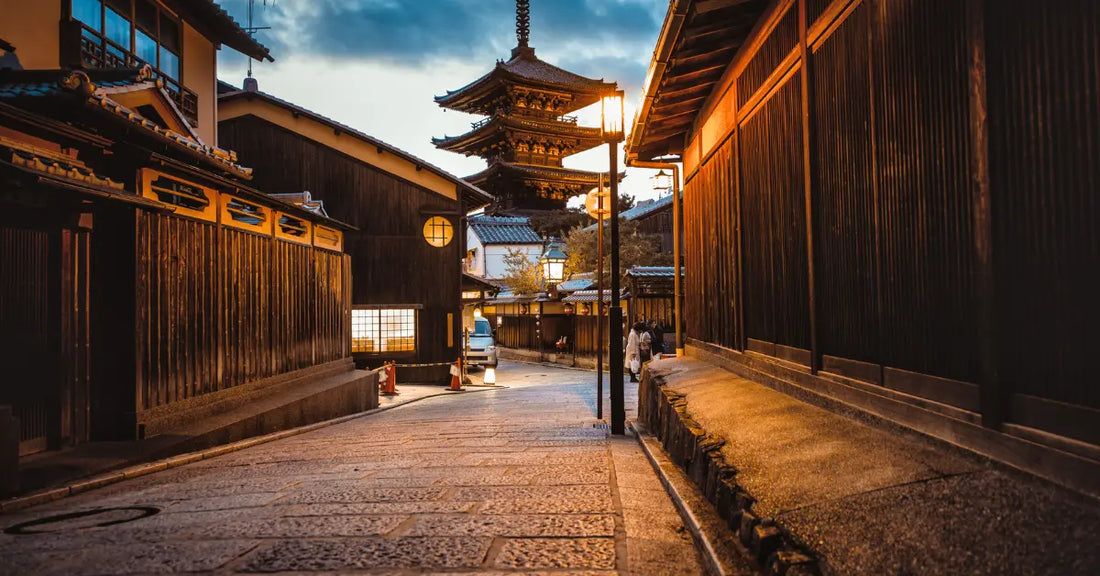When you think of Japan, it’s probably Tokyo, Kyoto, or maybe Osaka that come to mind first. The bright lights of Shibuya, the calm of a temple in Arashiyama, or the food stalls in Dotonbori—these are the images most people carry with them. But if you only stick to those well-known places, you’re missing out on a side of Japan that feels more raw, more surprising, and honestly, sometimes more memorable.
There are smaller cities and regions where you can step away from the tour groups and just… breathe. Places that aren’t exactly hidden, but they don’t show up on every travel list either. And visiting them changes the rhythm of your trip completely.
Japan’s Best Underrated Destinations for Travelers
Beyond the busy cities, you’ll find peaceful towns, scenic views, and cultural gems that many travelers overlook. Below is a list of underrated places in Japan you shouldn’t miss on your journey.
1. Kanazawa
Some people call it a “little Kyoto,” but that doesn’t feel quite right. Kanazawa is quieter, yes, but it has its own rhythm. You’ll find Kenrokuen Garden, one of Japan’s three most celebrated gardens, along with the old samurai district that feels like it belongs to another era. Walking through the narrow lanes, you notice how still everything feels. Tourists come, but it doesn’t have that constant hum of Kyoto. That difference is part of its charm—you feel like you’ve stumbled into something special that others pass by.

Kanazawa Castle Park
Image Source: Travelsewhere
2. Takayama
High in the mountains of Gifu Prefecture, Takayama offers a slower pace. The preserved wooden merchant houses, lively morning markets, and the famous Takayama Festival with its elaborate floats make the town feel rooted yet approachable. You can chat with someone selling miso or crafts and it feels natural, not rehearsed. Tourism is alive here, but it comes with a warmth that makes you want to linger.

The Hida-Takayama Old Town
Image Source: Donny Kimball (DonnyKimball.com)
3. Tottori
You don’t expect sand dunes in Japan, yet Tottori surprises you with exactly that. Miles of rolling sand stretch like a scene from another country. The Sand Museum adds to the surreal feeling, with giant sculptures carved entirely from sand. Seeing the dunes in person changes your perspective of Japan—it isn’t all temples and neon. It can be stark, quiet, and desert-like too.

Tottori Sand Dunes
Image Source: JRailPass
4. Naoshima
If art is your thing, Naoshima will pull you in quickly. This island in the Seto Inland Sea has transformed into what some call “the art island.” Modern museums by Tadao Ando, outdoor installations, and Kusama Yayoi’s famous pumpkin sculptures make it feel like a living gallery. The art doesn’t sit apart from the environment—it blends with it. Walking along the beach and coming across a piece of art feels unexpected, yet perfectly natural.

Naoshima
Image Source: Jatrabridge.com
5. Shikoku Pilgrimage Temples
Shikoku often flies under the radar, but the 88-temple pilgrimage shows another side of Japan. You don’t need to walk the whole route—most people don’t—but even visiting a handful of temples leaves an impression. Pilgrims in white robes walking along quiet country roads remind you that not all of Japan moves at bullet-train speed. The pace here slows you down, making space for reflection.

Shikoku Pilgrimage
Image Source: The Japan Times
6. Matsue
Set near Lake Shinji, Matsue is easy to overlook yet worth the detour. The sunset over the lake draws people to pause, the water glowing orange as if the whole town takes a collective breath. Matsue Castle, one of the few original castles still standing, adds to the city’s weight of history. Still, it’s often the quiet sunset that lingers in memory more than any landmark.

Matsue Castle
Image Source: Japan-Guide.com
7. Matsuyama
On Shikoku, Matsuyama balances history and modern life seamlessly. It’s home to Dogo Onsen, one of Japan’s oldest hot springs, said to inspire Studio Ghibli’s Spirited Away. Matsuyama Castle overlooks the city from its hilltop, offering sweeping views of the Seto Inland Sea. What makes the city special is how you can soak in centuries-old baths and then step into a contemporary café just minutes later. That blend of old and new feels understated yet memorable.

Matsuyama Castle
Image Source: Japan-Guide.com
8. Hagi
Hagi sits quietly on the Sea of Japan, a castle town with preserved samurai homes and a pottery tradition that continues today. Some travelers might find it too subdued—its charm is not flashy. But if you enjoy history folded into everyday streets, this is where you’ll feel it. The experience is subtle, maybe even unfinished, but that’s what makes it distinct.

Hagi City
Image Source: Hagishi.com
9. Nagasaki
Nagasaki is remembered worldwide for its tragic history, but there’s more to it than that. Centuries of Portuguese and Dutch influence shaped its streets, architecture, and food. Stroll through Dejima or try the city’s castella cake, and you’re reminded that Japan was never entirely closed off. The mix of cultures here feels layered and hard to define, which is exactly what makes Nagasaki compelling.

Confucius Shrine in Nagasaki
Image Source: GaijinPot Travel
10. Beppu
Japan is full of hot springs, but Beppu takes the idea further. Known for its “Hells” (jigoku), steaming pools in vivid colors that you admire rather than bathe in, Beppu also offers mud baths, sand baths, and every variety you can imagine. It is touristy, but in a way that feels playful and memorable. You leave not just relaxed, but curious about the different ways people have turned bathing into culture.
Beppu
Image Source: Japan-Guide.com
Final Words
Not every underrated place in Japan will leave you with the same feeling. Some may seem quieter than expected, even underwhelming if you arrive hoping for grand landmarks. But that’s part of their value—you trade obvious excitement for subtler impressions. Those quieter moments often stay with you longer than the big attractions ever could.
In these places, you notice details you’d otherwise miss: the sound of cicadas, the way a shopkeeper sets out fruit, even the towels in a small inn that feel different in your hands. That’s where Imabari towels stand out. Made in Ehime Prefecture, they carry the same quiet excellence as these towns—simple, authentic, and unforgettable. If you want to bring a touch of that understated Japanese quality home, Japarcana’s Imabari towels are a good place to begin.



